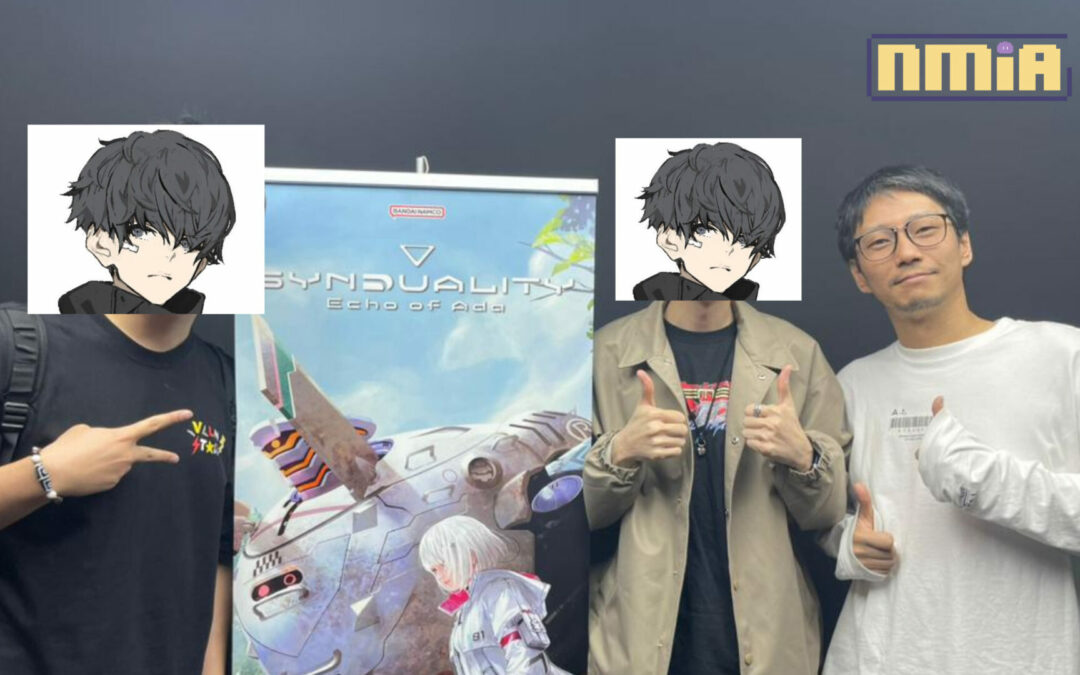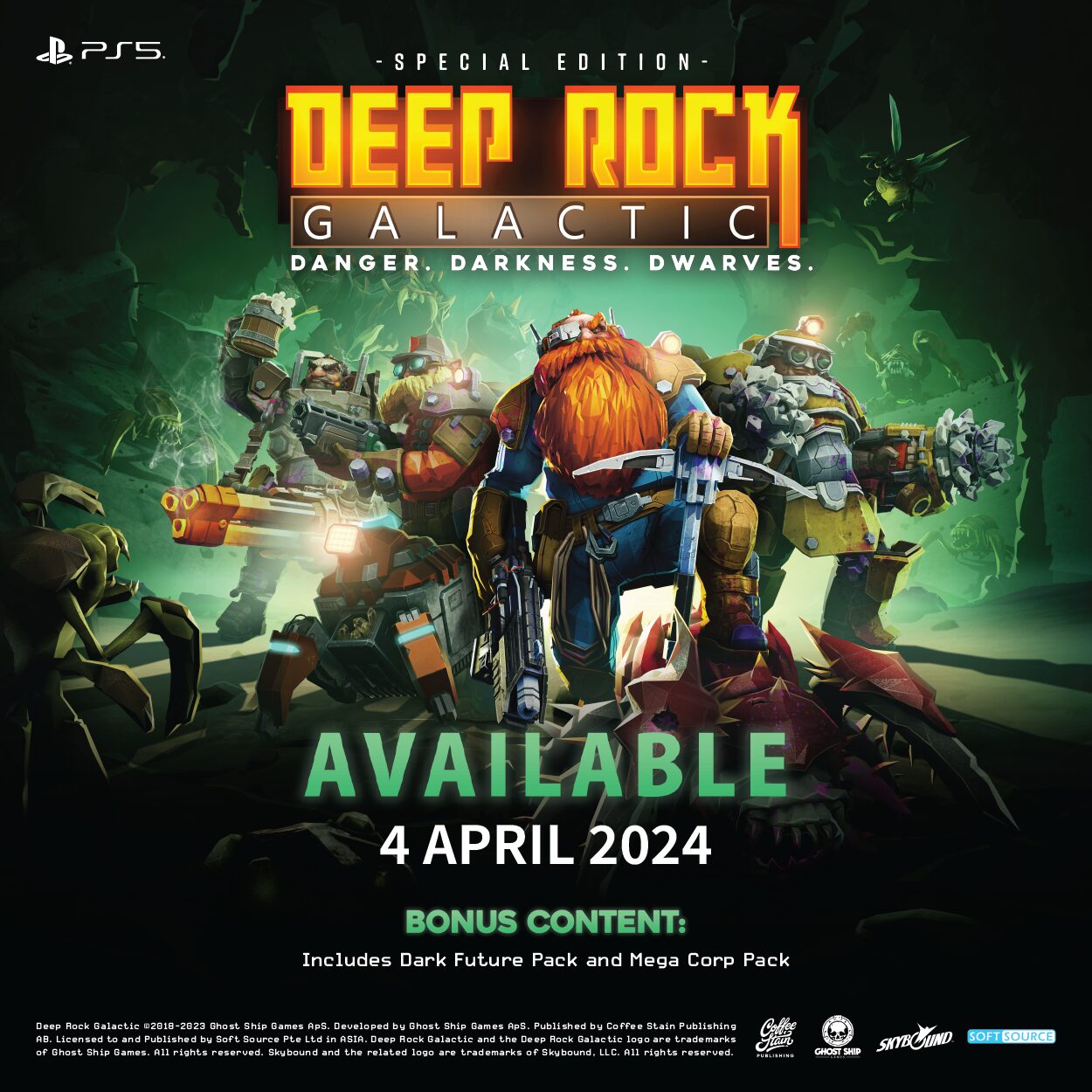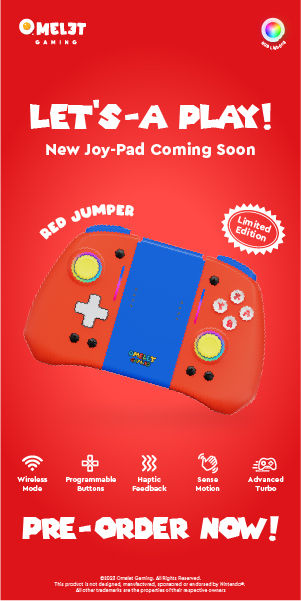Thanks to Bandai Namco Entertainment Asia, we had a chance to visit Thailand Game Show 2023, and had an interview with Yosuke Futami, the producer of SYNDUALITY Echo of Ada. Here’s some question we’ve asked along with other SEA medias.
Q1: What was the inspiration behind the design of Magus? They all look incredibly cool with a very intricate mechanical design. Can you share more about the inspiration?
A1: There were primarily two main sources of inspiration for Magus. The first one is Final Fantasy 6, which holds a special place for me as it was the first game I played on the Super Famicom when I was in elementary school. The character Magus draws inspiration from the magic and wizardry themes found in Final Fantasy.
Additionally, Zone of the Enders played a significant role in shaping the concept. I was fascinated by their user interface system, particularly the illustrations of the AI operators. I thought it would be great to have a clear visual representation of them.
While these were the main inspirations, there were also influences from various other creative works. I referenced a Japanese novel called “The Stories of Ibis,” which is a science fiction novel. Regarding the overall structure of the story, since SYNDUALITY also has an anime adaptation, we drew inspiration from Star Wars to create a detailed world setting. Specifically, for SYNDUALITY, we took cues from Episode 4 of Star Wars, which delves into the backstory of a world on the brink of collapse and the events leading up to it. This allowed us to weave a complex narrative that we wanted to bring to life through the game.
Q2: The mecha design in the game has a cute and rounded appearance, and the story is set as a prequel to the anime. Will players have the opportunity to explore and control different mechas in the game?
A2: Yes, there are numerous mechas available for players. You can customize the body, arms, and legs of these mechas, allowing you to create your unique designs or use them in various combinations.
Q3: Synduality is a mixed media project that spans across anime, manga, and video games. How did the idea of creating a unified universe come about?
A3: The concept of bringing together these three distinct media forms has a long history at BANDAI NAMCO. My desire to be part of BANDAI NAMCO and create something like this goes way back, and the inspiration for it can be traced to the classic IP, Patlabor, although it might not be widely known by many people.
The reason I wanted to approach it in this way is that, while I’m involved in both the creation of the anime and the game, I aimed to provide different ways of experiencing the same story. If both the anime and the game shared the same story entirely, I didn’t find it as compelling.
In the realm of anime, the focus is on the animation, motion, and staging, which is where it excels. On the other hand, the game places emphasis on gameplay, accumulating actions, and, of course, the excitement of in-game action. Moreover, with our adoption of Unreal Engine 5, the volume of data has increased exponentially, leading to significant differences in how you experience the anime and the game.
This direction guided me in creating a product that conveys the story uniquely in both mediums, despite existing within the same world.
Q4: Earlier, you mentioned that all the Magus adapt to the player’s playstyle, particularly during the leveling process and how they assist players. Could you elaborate on how you balance this to make the game more accessible to a wider range of players?
A4: Magus will reach a point where they acknowledge your progress, saying something like, “You’ve improved, would you like to take on a slightly more challenging path?” Sometimes, they might even tease you with comments like, “You’ve become quite skilled at the game, why not try this challenge? There are some valuable items to be found there.”
As players become more comfortable with the game, newer challenges will pique their interest. Magus may suggest, “How about exploring riskier areas for some valuable items?” or “Your abilities are certainly up to the task, right?” They might also express some doubt, saying, “I’m not sure if you’re ready for it, but why not give it a try?” Alternatively, they could advise, “It’s better to hold off on this for now.” The game offers various ways to guide and challenge players based on their progress.
Q5: Some players who have watched actual gameplay footage have expressed that the AI Magus seems to talk a lot and can be somewhat annoying. Will players have the option to adjust the frequency of AI Magus’s reminders in this regard?
A5: Players who hold this opinion, well, we are indeed considering allowing players to adjust the timing of AI Magus’s conversations. However, it’s important to note that the game, as I mentioned earlier, is designed to welcome new players to the shooting game genre.
For those who find the AI’s chatter excessive, it’s possible that they are already quite proficient in gaming. Players with this skill level will receive different advice in the game, which is a distinctive feature. They might hear suggestions like, “Since you excel at this game, let’s strategize on defeating opponents with valuable items together,” or “There’s a challenging quest available, and your level is more than capable, so let’s go for it.”
This sort of advice is what players will encounter after a few rounds of gameplay. The advice you’ve seen in the demo or video primarily caters to new players. While some may feel that they don’t require as much guidance, the experience for more skilled players will differ, and they’ll receive different types of advice.
Q6: How do you believe SYNDUALITY: Echo of Ada will resonate with players who are newcomers to the Mecha RPG genre, which might be unfamiliar to many gamers?
A6: While I discussed the game’s main concept earlier, the core theme of SYNDUALITY: Echo of Ada revolves around the sense of companionship and the reassuring feeling that “I am with you” and “you’re not alone.”
In terms of gameplay, we aim to create an experience where players feel like they have a companion sitting nearby, offering guidance and support, suggesting where to go or what to do. This game is about making players feel that while they play, someone is there, watching them, and actively engaging with the gameplay experience.
Q7: In SYNDUALITY: Echo of Ada, and in the recent trailer for Echo of Ada – Old Amacia, the game features a creative presentation with CG scenes, artistic comic panels, and anime-style elements. What inspired you to incorporate these diverse art styles into the game?
A7: Indeed, SYNDUALITY utilizes three distinct methods to tell its story. First, there are the impressive CG videos, followed by Bande dessinée, which resembles Kamishibai and features smoothly moving animations. Additionally, there’s voice drama. These three elements come together to create a comprehensive narrative experience.
Each style of presentation imparts different amounts of information, which is reflected in the game. The recent trailer provides some hints, and the properly recorded and stored video contains a wealth of information. The 3D CG animations are of high quality and can be trusted, as they are well-managed by AI.
In the case of the Bande dessinée-style video, some data might be broken, but the AI has creatively filled in the gaps. With the unique world setting of the game, we’ve prepared various methods for players to enjoy the story, and we’re constantly working to introduce new ways for players to engage with the narrative.
Q8: In the PvPvE gameplay of the game, is the emphasis more on finding ways to survive or on defeating opponents to obtain resources?
A8: “Gather the resources, and go home” The primary focus is on gathering resources and returning safely. Players should exercise caution while exploring. When players with similar objectives converge in the same area, they generally won’t attack each other. There’s a mutual recognition among those who don’t pose a threat. Occasionally, challenges may arise, leading to PvE gameplay centered around overcoming these difficulties.
The game imposes penalties for PvP encounters. PvE players are always alerted when those who engage in hostile activities log into the game, and there are bounties placed on their heads. The bounty rewards significantly outweigh collecting resources and returning home.
For players who prefer not to engage in PvP, it’s possible to band together with like-minded individuals to take down PvP targets. PvP involves substantial risk. Typically, experienced players might gravitate towards PvP, while newcomers might lean towards PvE. It’s important to note that there are two types of missions in the game, and the organizations for PvE missions and PvP missions are distinct.








